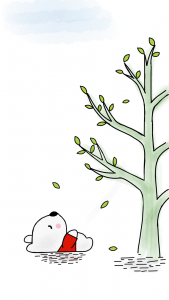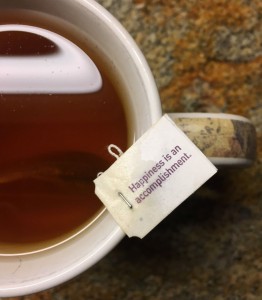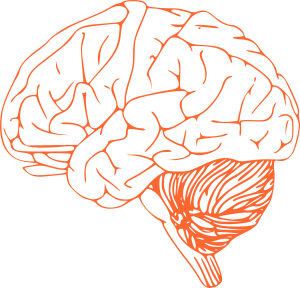This may sound silly, but I had never heard of the term “moonshot” before. Given all of the reading I have done for degrees in English, you would think I would know that one, but I didn’t. At first guess I would’ve said, “something having to do with the moon and space, and maybe an unlikely event,” and I would’ve been partly right. As it turns out, there are three definitions of the word according to Oxford Languages (via a Google search), and they involve launching a spacecraft to the moon, an  ambitious and innovative project, as well as a home run that is characterized by its height (really never heard that one).
ambitious and innovative project, as well as a home run that is characterized by its height (really never heard that one).
I mention this because I recently listened to an interview with Mike Massamino whose latest book is entitled, Moonshot: A NASA Astronaut’s Guide to Achieving the Impossible. After listening to the interview, I got the gist on what a moonshot is, but what was more interesting was some of the lessons he learned while in NASA and throughout life. Here are a few:
Keep trying even if you keep failing. Massamino had to apply to the space program four times, and he almost didn’t make it, but becoming an astronaut was his dream and he was determined to see it happen. The first two times, he was not accepted into the program; then, on the third try, he failed the eye exam, which meant he was basically out of the running. He didn’t need glasses (which weren’t allowed for astronauts and would have disqualified him anyway), but discovered that he had to undergo vision therapy to fix his vision issues, which was unknown at the time (and still fairly is). He didn’t give up though. He completed vision therapy over a year’s time and passed the eye exam so he applied again. Finally, on the fourth attempt, he was accepted into the space program. Most people would’ve given up after the first or second try, and the rest  would certainly have by the third with a failed eye exam and no way to fix it, but he didn’t. He says that even you are rejected multiple times and your dream seems like it will never happen, do not give up. To Massamino, not trying is the real failure.
would certainly have by the third with a failed eye exam and no way to fix it, but he didn’t. He says that even you are rejected multiple times and your dream seems like it will never happen, do not give up. To Massamino, not trying is the real failure.
Allow yourself 30-seconds of remorse and no more. Massimino learned a new method among his fellow astronauts for dealing with mistakes and to help him not dwell on the negative. If you mess up, make a mistake, or do something wrong, give yourself 30-seconds to berate yourself, call yourself names, and confirm all the fears and judgments about yourself; then, after those 30-seconds, let it go, and don’t revisit it again. Done and done. He says that we all make these mistakes (and in space they can be life-threatening), but we need to move on from them, and not constantly replay them in our heads. We grow from our mistakes by learning from them in an objective way, not by putting ourselves down and continually making ourselves feel worse.
Appreciate where we live. On Massimino’s second spacewalk, while on the moon and waiting for another astronaut to complete a task, he had the opportunity to stop and look around more. As he did, he saw our planet from a completely different perspective than from the window of the space shuttle. The delicate blue ring of our atmosphere and its fragility, the beauty of it and the Earth itself made him realize that, in his opinion, this place, our planet, is our own private heav en. Looking in one direction, he saw complete darkness, and in the other, the ball of fire that is the sun. From that experience, he said that he’s “checked out the neighborhood, and there is nothing around, it is only our planet.”
en. Looking in one direction, he saw complete darkness, and in the other, the ball of fire that is the sun. From that experience, he said that he’s “checked out the neighborhood, and there is nothing around, it is only our planet.”
Seeing it firsthand and knowing what we have here on Earth makes him appreciate it each day, from the awesome aspects of nature to the incredible inventions of man. He thinks that the appreciation of living on this planet can help sustain us each day. “The planet itself is a precious place. It is a paradise for us to live on. There are opportunities for happiness, and love, and friendship, and for us to just enjoy it.” He would know; he went beyond Earth! Not many of us can have such a perspective.
He ends the interview by encouraging the audience to continue to pursue their moonshot, whatever it may be. He is living proof that it’s possible, and he wants us all to have the courage to do the same. (Knowing the definition of that word now, I’ll keep trying!)
 darn elusive thing that only gets more challenging as we age; how do we get enough of it, especially when it evades us at 3AM? This is a question I’ve been pondering between two and five in the morning for the last few years. The frustration, exhaustion, and anger I’ve felt from time to time during my bouts of insomnia have almost sent me over the edge.
darn elusive thing that only gets more challenging as we age; how do we get enough of it, especially when it evades us at 3AM? This is a question I’ve been pondering between two and five in the morning for the last few years. The frustration, exhaustion, and anger I’ve felt from time to time during my bouts of insomnia have almost sent me over the edge. often need less than we think: “Sleep is similar to food in that our body also needs a core amount of food to function. Most individuals, however, eat more than their core requirements to feel good.” I can honestly say that I do not feel good with only five and a half hours of sleep, but at least I know now that I can get through the day (although with probable “mood impairment,” he notes).
often need less than we think: “Sleep is similar to food in that our body also needs a core amount of food to function. Most individuals, however, eat more than their core requirements to feel good.” I can honestly say that I do not feel good with only five and a half hours of sleep, but at least I know now that I can get through the day (although with probable “mood impairment,” he notes). ly have not solved my insomnia problem entirely, but his book taught me a few things I did not know about sleep and how I can help myself when I can’t get it. It is certainly a work in progress for me, but I do feel better off than I did a few months ago. If only I could sleep like my son who literally closes his eyes and stays asleep all night, almost nothing wakes him, and he comes downstairs in the mornings refreshed and energized.
ly have not solved my insomnia problem entirely, but his book taught me a few things I did not know about sleep and how I can help myself when I can’t get it. It is certainly a work in progress for me, but I do feel better off than I did a few months ago. If only I could sleep like my son who literally closes his eyes and stays asleep all night, almost nothing wakes him, and he comes downstairs in the mornings refreshed and energized. bring a smile or a tear in remembrance, but they can’t stand in for anything more than that. (It was more comforting to have a favorite picture of her around than a beloved China set anyway.)
bring a smile or a tear in remembrance, but they can’t stand in for anything more than that. (It was more comforting to have a favorite picture of her around than a beloved China set anyway.) These days, I try to think of and point out the funny little quirks my mom had (and she had quite a few). It makes me feel like she still lives on in some way. My kids know her silly sayings and sometimes goofy mannerisms. My brother, husband, and I will bring them up when we notice something that reminds us of her. It helps. We know she won’t be coming back, and I honestly would not want her to be back in the same situation, but each day I can remember the things about her that make me smile. And on the days when it feels too hard, I know that they will eventually pass. She is gone but not forgotten. Miss you, Ma.
These days, I try to think of and point out the funny little quirks my mom had (and she had quite a few). It makes me feel like she still lives on in some way. My kids know her silly sayings and sometimes goofy mannerisms. My brother, husband, and I will bring them up when we notice something that reminds us of her. It helps. We know she won’t be coming back, and I honestly would not want her to be back in the same situation, but each day I can remember the things about her that make me smile. And on the days when it feels too hard, I know that they will eventually pass. She is gone but not forgotten. Miss you, Ma. What job would make me happy? What material item could do it? How much more money do I need to reach that place and stay there?
What job would make me happy? What material item could do it? How much more money do I need to reach that place and stay there? promised land to arrive at after fighting through the long journey, instead we create or experience the happy moments day in and day out, and be grateful for each of them. (In the words of the Mandalorian, “This is the way.”)
promised land to arrive at after fighting through the long journey, instead we create or experience the happy moments day in and day out, and be grateful for each of them. (In the words of the Mandalorian, “This is the way.”) who are parents, how many times do you ask your kid to pick up his shoes that cover the floor only for the disinterested child to grunt, “I’ll do it later.”
who are parents, how many times do you ask your kid to pick up his shoes that cover the floor only for the disinterested child to grunt, “I’ll do it later.”
 Good luck to all of us procrastinators out there. As Oscar Wilde said, “I never put off till tomorrow what I can possibly do – the day after.”
Good luck to all of us procrastinators out there. As Oscar Wilde said, “I never put off till tomorrow what I can possibly do – the day after.” challenge, set the goal, succeeded, then felt a little empty after, or possibly disappointed, because “now what?”
challenge, set the goal, succeeded, then felt a little empty after, or possibly disappointed, because “now what?” own obstacles. Sometimes thinking about other people and their bigger problems makes me feel petty and small about my own (i.e. my “first world” problems). But, good or bad, we all have issues; that is the nature of life. And maybe if we focus on the perspective that other people have faced problems, similar or even worse, and they got through them, we can too. It might just be the little lift we need to feel better or keep going.
own obstacles. Sometimes thinking about other people and their bigger problems makes me feel petty and small about my own (i.e. my “first world” problems). But, good or bad, we all have issues; that is the nature of life. And maybe if we focus on the perspective that other people have faced problems, similar or even worse, and they got through them, we can too. It might just be the little lift we need to feel better or keep going.
 podcast Brené Brown interviewed Dr. Amishi Jha, a neuroscientist who has studied memory and the brain. She says that when many of us get older and “can’t seem to remember where we put things,” it’s because we aren’t paying attention to where we put something, not that we’re getting dementia or that our old brains don’t work as well. My dear friend Vicki was infamous for losing her car keys since the day she got her driver’s license. It’s interesting to know that she wasn’t forgetful so much as not being mindful of where she set them down (and they could end up anywhere). However, the rest of us can still lose our glasses while they sit on top of our heads…
podcast Brené Brown interviewed Dr. Amishi Jha, a neuroscientist who has studied memory and the brain. She says that when many of us get older and “can’t seem to remember where we put things,” it’s because we aren’t paying attention to where we put something, not that we’re getting dementia or that our old brains don’t work as well. My dear friend Vicki was infamous for losing her car keys since the day she got her driver’s license. It’s interesting to know that she wasn’t forgetful so much as not being mindful of where she set them down (and they could end up anywhere). However, the rest of us can still lose our glasses while they sit on top of our heads… cause I can’t understand why people like these women and what makes them so popular, except for their ridiculous wealth…. “Good for them, not for me.”)
cause I can’t understand why people like these women and what makes them so popular, except for their ridiculous wealth…. “Good for them, not for me.”) One current example in my life is my choice to take a break from alcohol (more on that in a future post). As I have now noticed, alcohol is everywhere and people are drinking it everywhere too. Instead of seeing all of the beverages I cannot (choose not) to drink, I will focus on the abundance of non-alcoholic drinks that are available (even if it means providing my own). So, as the holiday comes and we sit at the table with our families and friends, try not to focus only on the one person who antagonizes you or triggers you. Instead, notice the many people you enjoy being with, the table covered in food, and the one day out of the year when we overeating is encouraged! Abundance abounds (when we choose to see it).
One current example in my life is my choice to take a break from alcohol (more on that in a future post). As I have now noticed, alcohol is everywhere and people are drinking it everywhere too. Instead of seeing all of the beverages I cannot (choose not) to drink, I will focus on the abundance of non-alcoholic drinks that are available (even if it means providing my own). So, as the holiday comes and we sit at the table with our families and friends, try not to focus only on the one person who antagonizes you or triggers you. Instead, notice the many people you enjoy being with, the table covered in food, and the one day out of the year when we overeating is encouraged! Abundance abounds (when we choose to see it). System and, put simply, it’s said to be the link and filter between your conscious and subconscious mind. It’s located in your brain stem and takes instructions from your conscious and passes them onto your subconscious.
System and, put simply, it’s said to be the link and filter between your conscious and subconscious mind. It’s located in your brain stem and takes instructions from your conscious and passes them onto your subconscious.